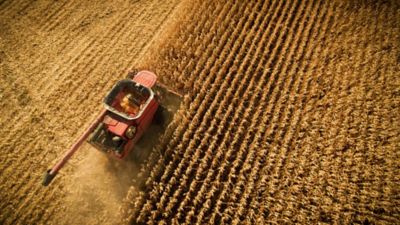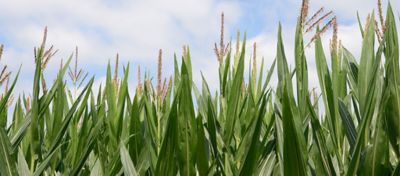NCGA Yield Contest Winners
To win the NCGA yield contest, you’ve got to do more than join the Corn Revolution. You’ve got to be a revolutionary.
See the Revolutionaries1/10/2025

Crop Insights
Written by Mark Jeschke, Ph.D., Pioneer Agronomy Manager
Pioneer has been leading hybrid corn development since 1920. And is just getting started.

To win the NCGA yield contest, you’ve got to do more than join the Corn Revolution. You’ve got to be a revolutionary.
See the Revolutionaries
This year, after a decade of innovation in genetics, breeding, technology and testing, everything came together. Resulting in better results and better returns.
See Local Yield DataUse our corn seed guide to explore Pioneer® brand corn products that will maximize yield potential on every acre.
Find Local Products













AM - Optimum® AcreMax® Insect Protection system with YGCB, HX1, LL, RR2. Contains a single-bag integrated refuge solution for above-ground insects. In EPA-designated cotton growing counties, a 20% separate corn borer refuge must be planted with Optimum AcreMax products. AML - Optimum® AcreMax® Leptra® products with AVBL, YGCB, HX1, LL, RR2. Contains a single-bag integrated refuge solution for above-ground insects. In EPA-designated cotton growing countries, a 20% separate corn borer refuge must be planted with Optimum AcreMax Leptra products. YGCB, HX1, LL, RR2 (Optimum® Intrasect®) - Contains a Bt trait and Herculex® I gene for resistance to corn borer.
AVBL,YGCB,HX1,LL,RR2 (Optimum® Leptra®) - Contains the Agrisure Viptera® trait, the Bt trait, the Herculex® I gene, the LibertyLink® gene, and the Roundup Ready® Corn 2 trait. Q (Qrome®) - Contains a single-bag integrated refuge solution for above- and below-ground insects. The major component contains the Agrisure® RW trait, the Bt trait, and the Herculex® XTRA genes. In EPA-designated cotton growing counties, a 20% separate corn borer refuge must be planted with Qrome products.
V – Vorceed™ Enlist® products with V, LL, RR, ENL. Contains a single-bag integrated refuge solution with multiple modes of action for above- and below-ground insects. The major component contains the Herculex® XTRA genes, the RW3 trait and the VTP trait. In EPA-designated cotton growing counties, a 20% separate corn borer refuge must be planted for Vorceed Enlist products. PCE – Powercore® Enlist® Refuge Advanced® corn products with HX1, VTP, ENL, LL, RR2. Contains a single-bag integrated refuge solution for above-ground insects. In EPA-designated cotton-growing counties, a 20% separate corn borer refuge must be planted with PowerCore Enlist Refuge Advanced products. PCUE – Powercore® UltraEnlist® Refuge Advanced® corn products with AVBL, HX1, VTP, ENL, LL, RR2. Contains a single-bag integrated refuge solution for above-ground insects. In EPA-designated cotton-growing counties, a 20% separate corn borer refuge must be planted with PowerCore Ultra Enlist Refuge Advanced products. PWUE – PowerCore® Ultra Enlist® corn products with AVBL, HX1, VTP, ENL, LL, RR. A separate 5% corn borer refuge in the corn belt, and a separate 20% corn borer refuge in EPA-designated cotton-growing counties must be planted PowerCore Ultra Enlist products. All Pioneer products are hybrids unless designated with AM, AML, AMT, AMX, AMXT, Q, V, PCU, PCUE, PWE & PWUE, in which case they are brands.
POWERCORE® is a registered trademark of Bayer Group. POWERCORE® multi-event technology developed by Corteva Agriscience and Bayer Group. LibertyLink® and the Water Droplet Design are registered trademarks of BASF. ®Roundup and Roundup Ready are registered trademarks of Bayer Group. Agrisure® and Agrisure Viptera® are registered trademarks of, and used under license from, a Syngenta Group Company. Agrisure® technology incorporated into these seeds is commercialized under a license from Syngenta Crop Protection AG. Always follow IRM, grain marketing and all other stewardship practices and pesticide label directions. B.t. products may not yet be registered in all states. Check with your seed representative for the registration status in your state. Corteva products are launched in accordance with Corteva Agriscience launch policies and Excellence Through Stewardship® Product Launch Guidance. Grain and byproducts produced from PowerCore® Ultra Enlist® corn material cannot be marketed in jurisdictions where not authorized, including Mexico, until the applicable approval is granted. Refer to www.biotradestatus.com for updated information on regulatory status, as well as www.traitstewardship.com for additional stewardship requirements.
Following burndown, Enlist Duo® and Enlist One® herbicides with Colex-D® technology are the only herbicides containing 2,4-D that are authorized for preemergence and postemergence use with Enlist® crops. Consult Enlist® herbicide labels for weed species controlled. Enlist Duo and Enlist One herbicides are not registered for use or sale in all states and counties; are not registered in AK, CA, CT, HI, ID, MA, ME, MT, NH, NV, OR, RI, UT, VT, WA and WY; and have additional subcounty restrictions in AL, GA, TN and TX, while existing county restrictions still remain in FL. All users must check “Bulletins Live! Two” no earlier than six months before using Enlist One or Enlist Duo. To obtain “Bulletins,” consult epa.gov/espp/, call 1-844-447-3813, or email ESPP@epa.gov. You must use the “Bulletin” valid for the month and state and county in which Enlist One or Enlist Duo are being applied. Contact your state pesticide regulatory agency if you have questions about the registration status of Enlist® herbicides in your area.
ALWAYS READ AND FOLLOW PESTICIDE LABEL DIRECTIONS. IT IS A VIOLATION OF FEDERAL AND STATE LAW TO USE ANY PESTICIDE PRODUCT OTHER THAN IN ACCORDANCE WITH ITS LABELING. ONLY USE FORMULATIONS THAT ARE SPECIFICALLY LABELED FOR SUCH USE IN THE STATE OF APPLICATION. USE OF PESTICIDE PRODUCTS, INCLUDING, WITHOUT LIMITATION, 2,4-D-CONTAINING PRODUCTS NOT AUTHORIZED FOR USE WITH ENLIST CROPS, MAY RESULT IN OFF-TARGET DAMAGE TO SENSITIVE CROPS/AREAS AND/OR SUSCEPTIBLE PLANTS, IN ADDITION TO CIVIL AND/OR CRIMINAL PENALTIES. Additional product-specific stewardship requirements for Enlist crops, including the Enlist Product Use Guide, can be found at www.traitstewardship.com.
The foregoing is provided for informational use only. Contact your Pioneer sales professional for information and suggestions specific to your operation. Product performance is variable and subject to any number of environmental, disease, and pest pressures. Individual results may vary. Pioneer® brand products are provided subject to the terms and conditions of purchase which are part of the labeling and purchase documents.
